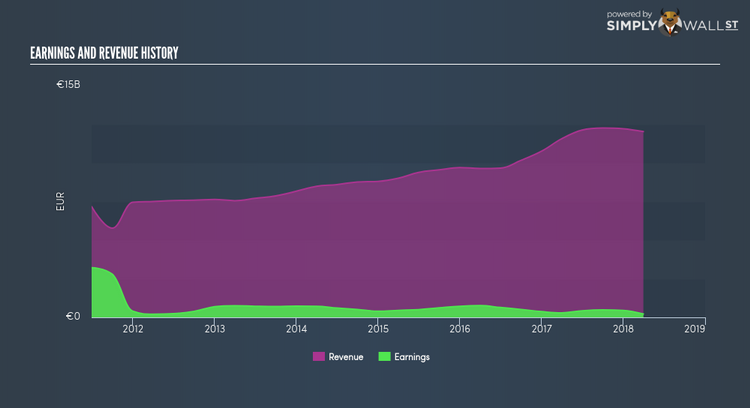Ferrovial SA.’s (BME:FER) Earnings Dropped -24.06%, How Did It Fare Against The Industry?

When Ferrovial SA. (BME:FER) announced its most recent earnings (31 March 2018), I compared it against two factor: its historical earnings track record, and the performance of its industry peers on average. Being able to interpret how well Ferrovial has done so far requires weighing its performance against a benchmark, rather than looking at a standalone number at a point in time. In this article, I’ve summarized the key takeaways on how I see FER has performed. See our latest analysis for Ferrovial
Was FER weak performance lately part of a long-term decline?
I like to use data from the most recent 12 months, which annualizes the most recent half-year data, or in some cases, the latest annual report is already the most recent financial year data. This method allows me to analyze different companies in a uniform manner using new information. For Ferrovial, its latest earnings (trailing twelve month) is €221.00M, which, relative to the prior year’s figure, has fallen by -24.06%. Since these values are relatively nearsighted, I’ve created an annualized five-year figure for Ferrovial’s earnings, which stands at €698.20M This doesn’t look much better, as earnings seem to have gradually been diminishing over the longer term.
Why could this be happening? Well, let’s look at what’s going on with margins and whether the entire industry is feeling the heat. Revenue growth over the past couple of years, has been positive, nevertheless earnings growth has been deteriorating. This implies that Ferrovial has been increasing expenses, which is harming margins and earnings, and is not a sustainable practice. Eyeballing growth from a sector-level, the ES construction industry has been growing its average earnings by double-digit 13.59% in the past year, and 15.20% over the past half a decade. This means any tailwind the industry is profiting from, Ferrovial has not been able to realize the gains unlike its industry peers.
What does this mean?
Though Ferrovial’s past data is helpful, it is only one aspect of my investment thesis. Typically companies that endure a drawn out period of reduction in earnings are going through some sort of reinvestment phase with the aim of keeping up with the recent industry growth and disruption. I suggest you continue to research Ferrovial to get a more holistic view of the stock by looking at:
Future Outlook: What are well-informed industry analysts predicting for FER’s future growth? Take a look at our free research report of analyst consensus for FER’s outlook.
Financial Health: Is FER’s operations financially sustainable? Balance sheets can be hard to analyze, which is why we’ve done it for you. Check out our financial health checks here.
Other High-Performing Stocks: Are there other stocks that provide better prospects with proven track records? Explore our free list of these great stocks here.
NB: Figures in this article are calculated using data from the trailing twelve months from 31 March 2018. This may not be consistent with full year annual report figures.
To help readers see pass the short term volatility of the financial market, we aim to bring you a long-term focused research analysis purely driven by fundamental data. Note that our analysis does not factor in the latest price sensitive company announcements.
The author is an independent contributor and at the time of publication had no position in the stocks mentioned.

 Yahoo Finance
Yahoo Finance 
